Tags
Avanos, Cappadocia, cave dwellers, Central Turkey, Devrent Valley, Fairy Chimneys, Goreme, Hot Air Balloon Flight, Kapadokya, Kaymaki underground city, Kayseri, Love Valley, Mt. Erciyes, Museum Hotel, Mustafapasa, Ortahisar, Pasabag ValleyZelve Valley, Pigeon Valley Red Valley, Sobesos ancient city, underground cities, UNESCO Worl Heritage Site
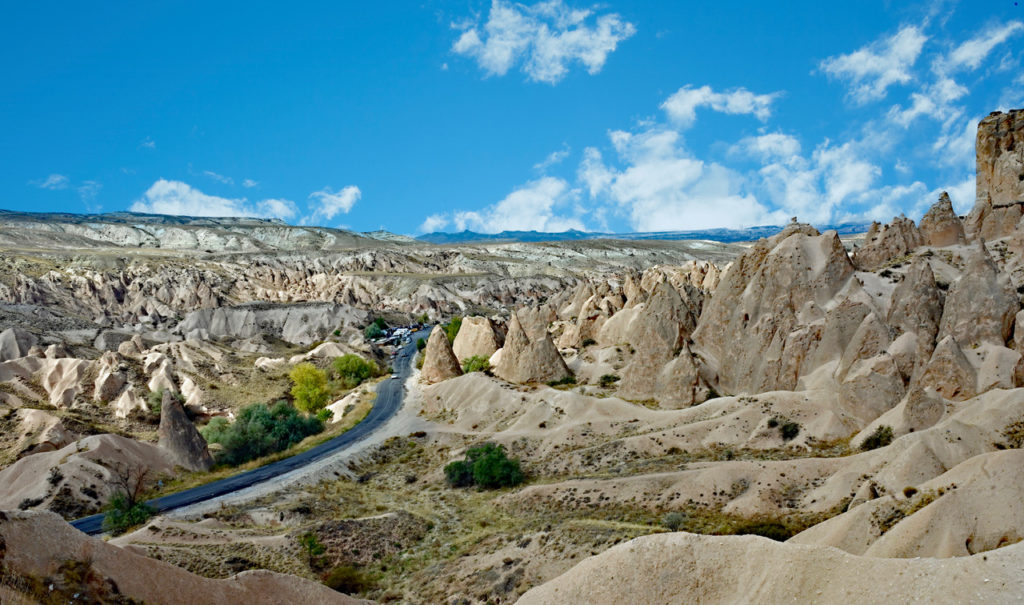
Following our time in Jordan, the second part of our recent trip was focused on Cappadocia, in Central Turkey, also a place we had long wanted to visit.
Over the past decade or so, as we considered this trip, we must have seen hundreds of photographs of the strange formations which make up this magical area. Often, when that happens, the traveler is disappointed with the reality, for how can the beautiful images match the reality of what you’ll see and how you will experience it? We are happy to report that in this case we were not disappointed. Cappadocia is even more impressive than its pictures, even Ellen’s!
Kapadoky (its Turkish name) was designated in 1985 as a UNESCO World Heritage Site, primarily for its dramatic landscapes, underground cities, cave churches, and houses carved in the rocks.
It’s a semi-desert region dating back as far as the Bronze age and known for its tall, cone-shaped, rock formations (“fairy chimneys”) and for its cave dwellers (“troglodytes”). It later became used as refuges by Christians.
The soft volcanic rock was shaped by erosion into towers, cones, valleys, and caves and was used throughout history (think Byzantine, Roman and Islamic eras) by inhabitants who built rock cut churches, underground tunnels, and ‘cities’. Wind erosion created exotic shapes out of the sandstone, each area different — strange, weird, mesmerizing. Ellen’s camera never stopped clicking.
We went to Cappadocia largely for its stunning landscapes and natural wonders, but we learned so much about ancient religious history. We flew from Istanbul to Kayseri and drove to the small town of Uchisar. We stayed four nights at the wonderful Museum Hotel (partially built into the caves) with its unique rooms and panoramic views of various valley and sites.
The photographs you see below and in the slide show are from the Devrent, Pasabag, Pigeon, and Zelve Valleys and the underground city of Kaymakli, the Goreme Open Air Museum, the ancient city of Sobesos, and Ortahisar.
Certainly one of the highlights was the hot air balloon flight as we floated over Cappadocia’s unforgettable landscapes. We rose at 5 AM and took our place in that tiny but tall basket below a very large hot air balloon. We rose into the air as the sun was breaking over the mountain tops around us. To say this was spectacular would be an understatement. At one point, there were well over 100 hot air balloons in the air at the same time, creating a unique sight itself. Fortunately, none of them crashed that day.
Our time in Cappadocia, along with the first part of the trip (see Thru Ellen’s Lens: Petra & Wadi Rum), certainly ranks in the top tier of our continuing explorations of the world.
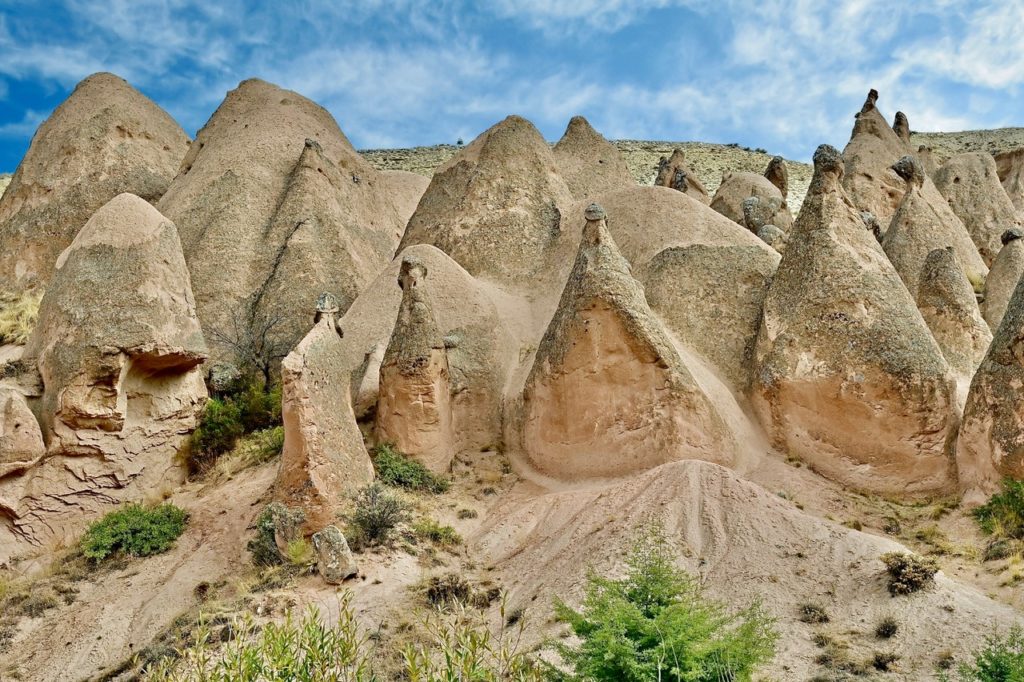
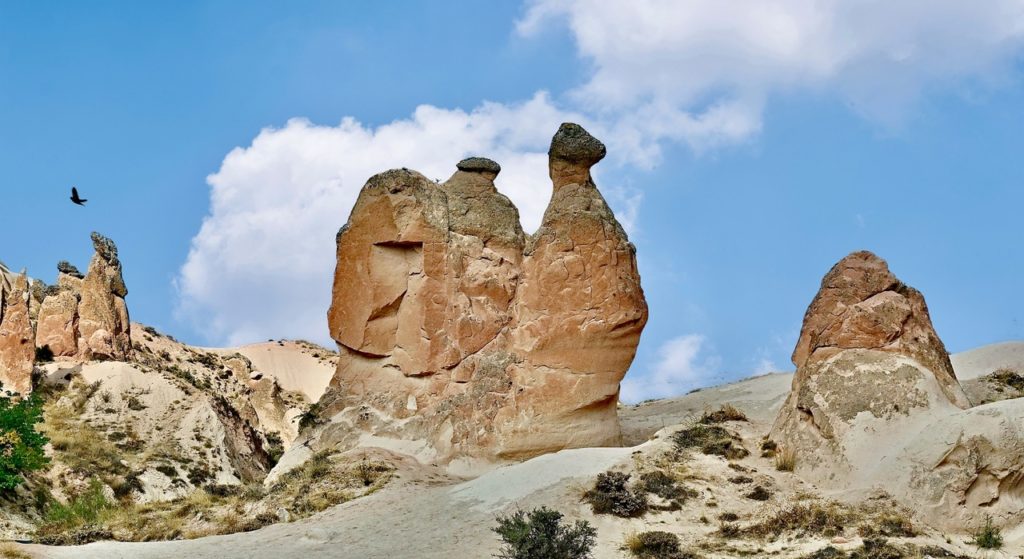
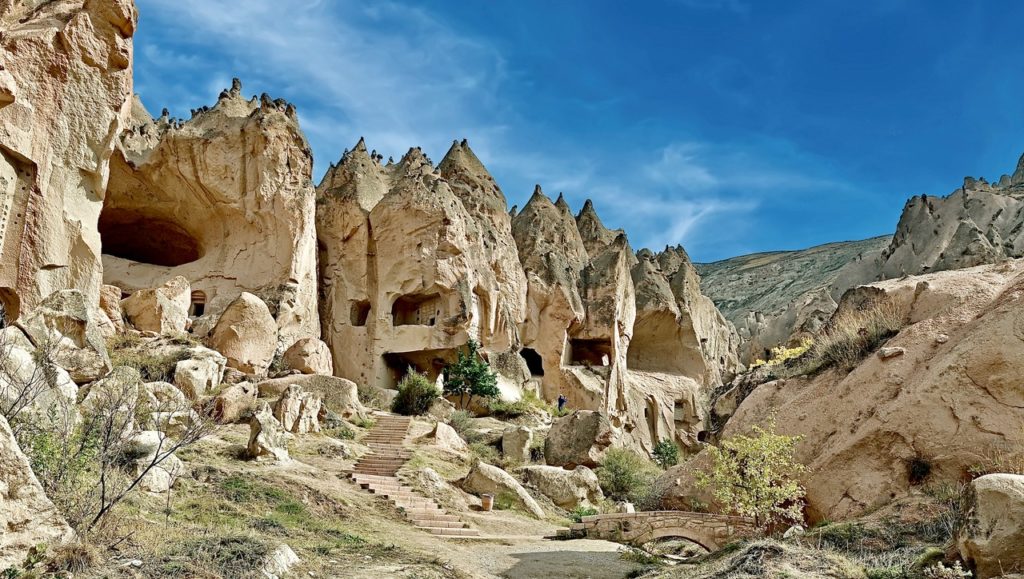
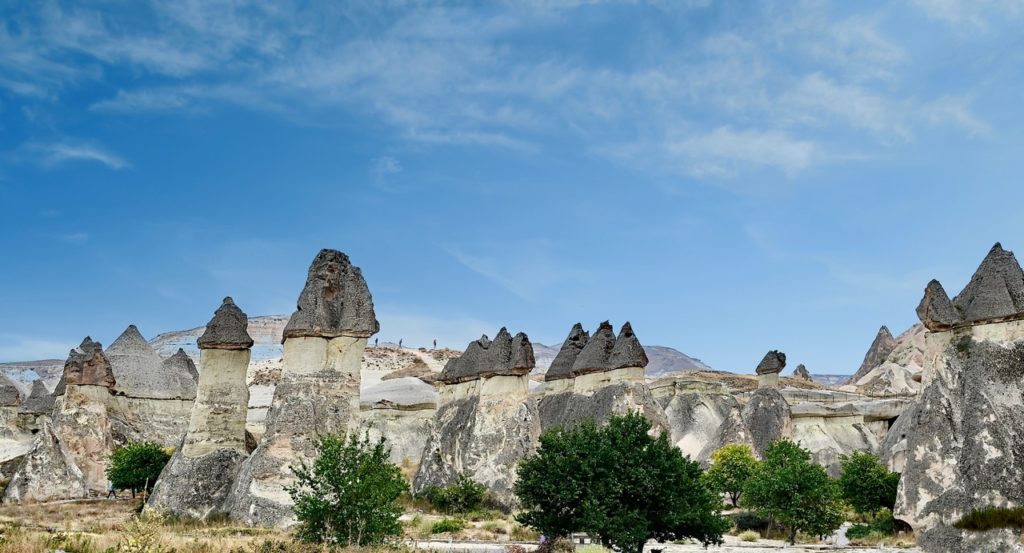
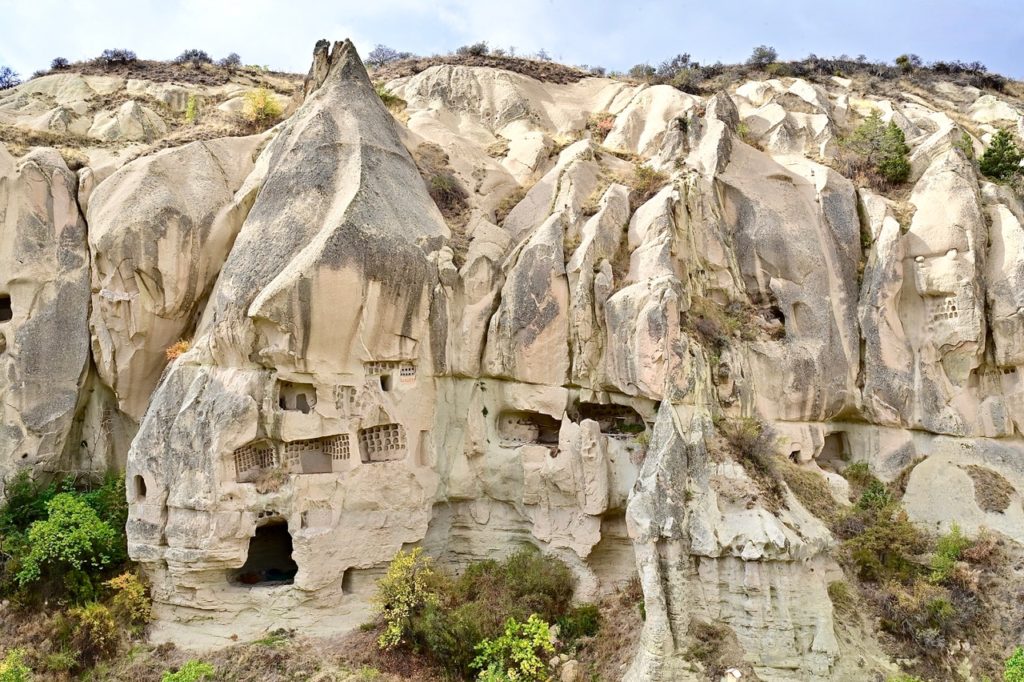

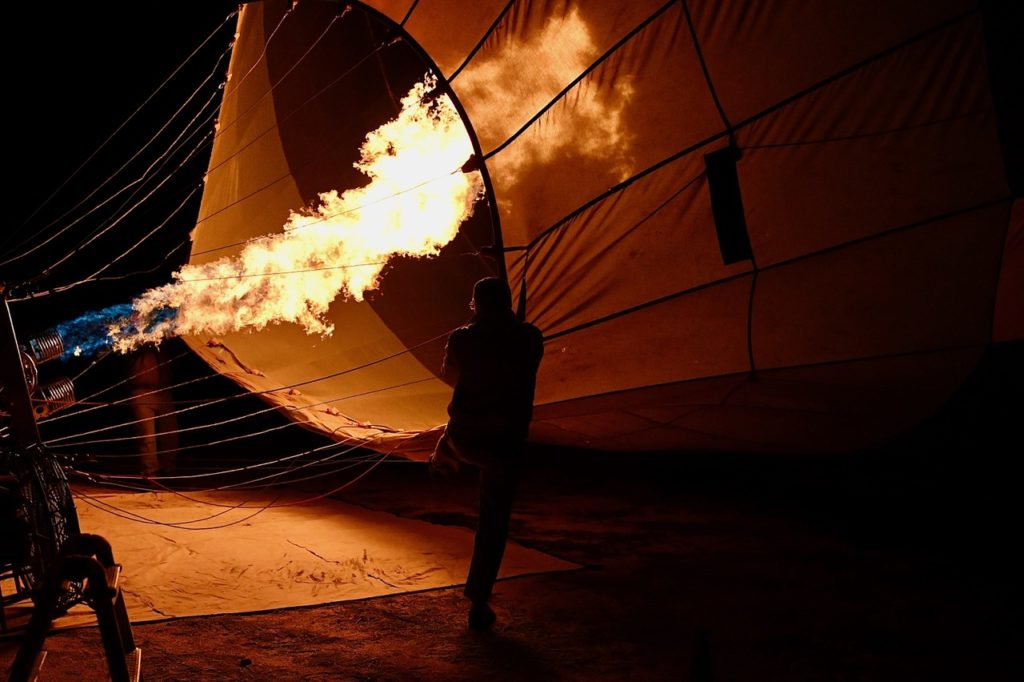
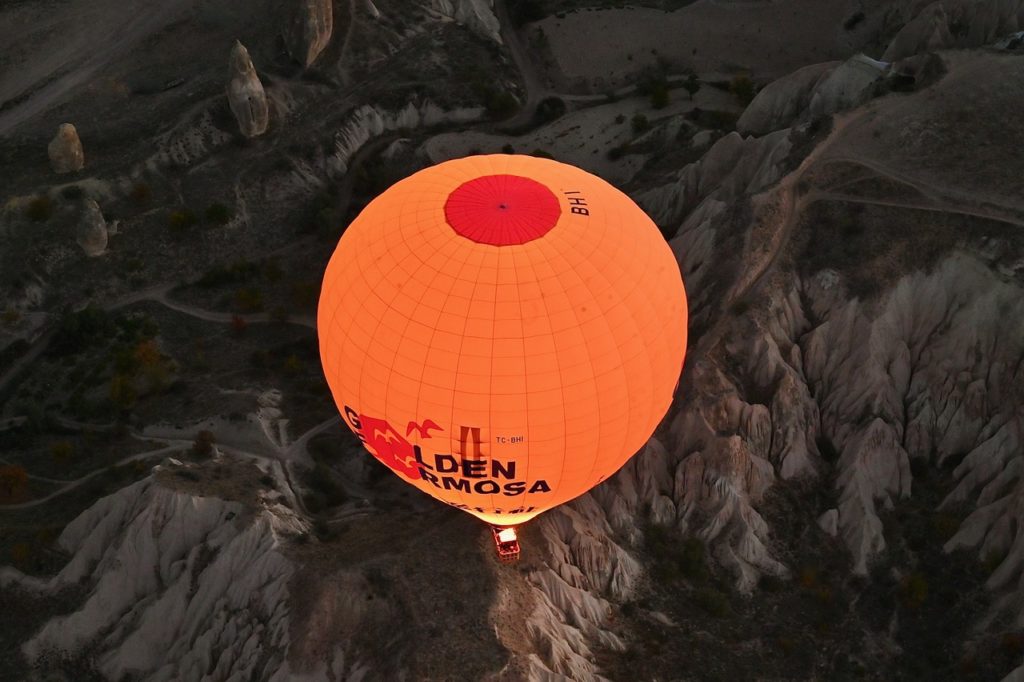
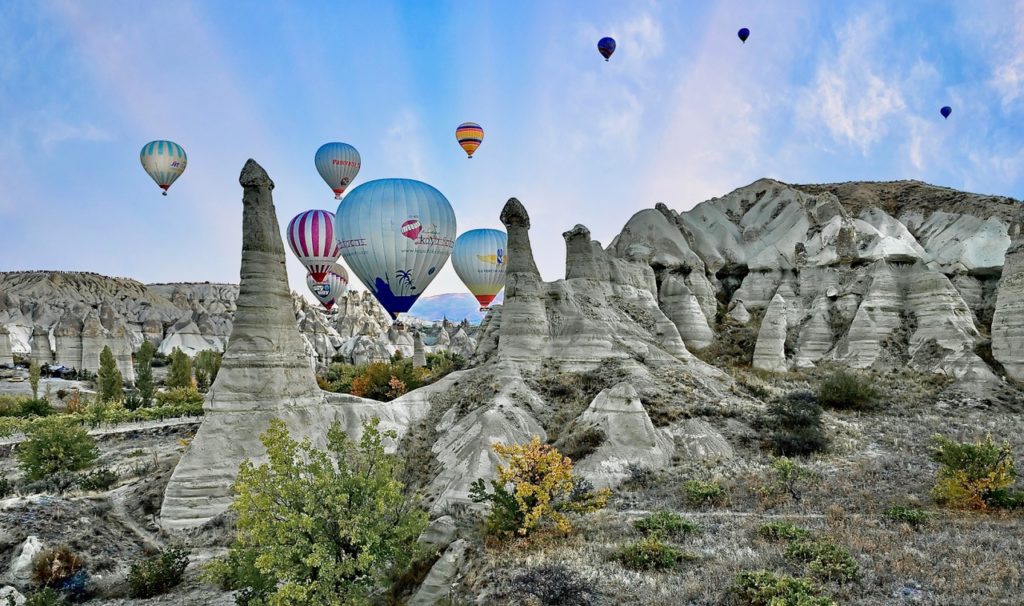
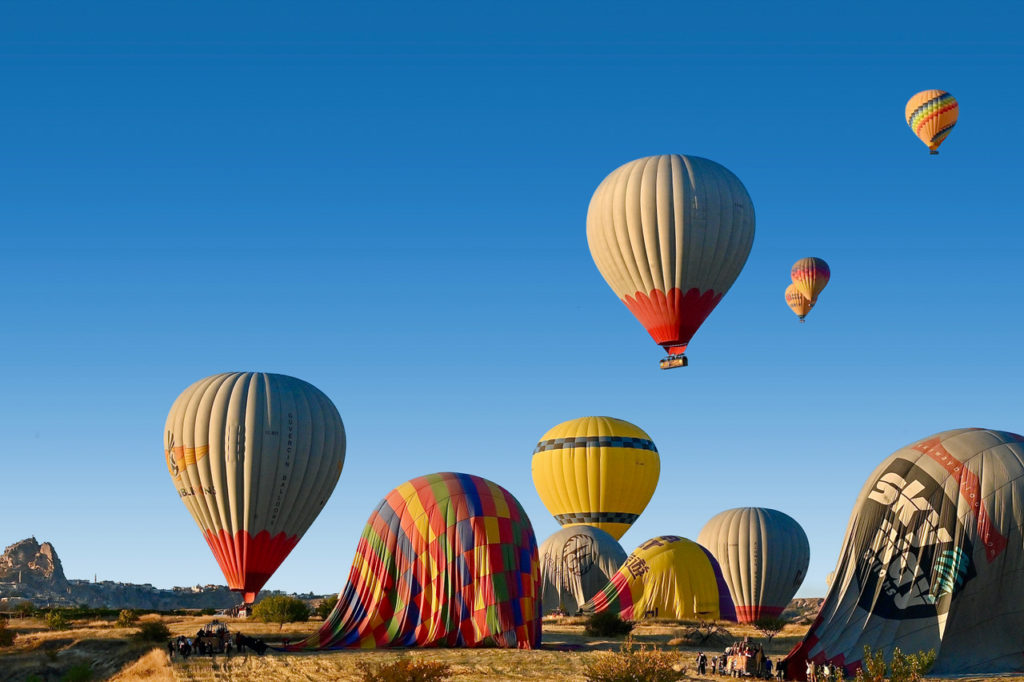
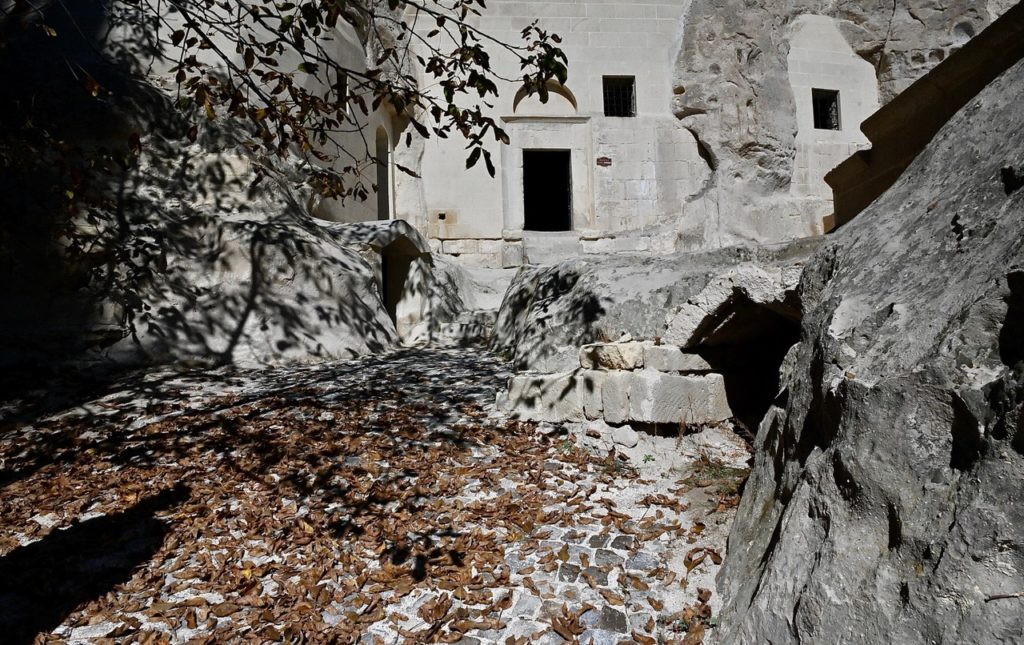
To see all 41 of Ellen’s photos go to: Cappadocia: Thru Ellen’s Lens
As always, we recommend you view all the photos in the largest size possible (use a laptop or desktop computer). They are much sharper and much more detail than the ones above or if you only look at the opening page of the slide show.
For the best viewing, click on the little arrow at the top right of the first page of the link to start the slide show.


Marsha Harbison said:
What an amazing & interesting area of the world. Thanks for sharing your beautiful pictures. Safe travels & stay well. Marsha Harbison
Eric and Ziva said:
I loved your pictures and you had great wording and lableing.
esther barazzone said:
Dear Ellen and Richard,
I have had the privilege of going to Cappadocia, and going up in a balloon (amazing for me who trembles even at the idea of heights), but I must say that I don’t say that I think I “saw” it much better through Ellen’s stunningly sensitive and lyrical lens. Thank you!!
Esther
esther barazzone said:
Oops..sorry should have edited the above but you get the idea…
Ed Scholl said:
Absolutely stunning! Thank you for sharing these. Romana and I sure hope to be able to go someday.
Bill Plitt said:
Good morning! Antiquity, God’s sculpture, ingenuity— all at once! It rivals the canyon lands in a unique, and humanly way. Thanks for sharing your experience in a world unknown to me through your travels and lenses. With gratitude, Bill.
Eric N. Stravitz said:
Fabulous images! Thanks for sharing, Eric.
Ping said:
Vivid intro by Richard and stunning pictures by Ellen, you made me wanting to go there. I concluded by telling my husband that “I want to go!” He responded: “Yes, let’s do it!”